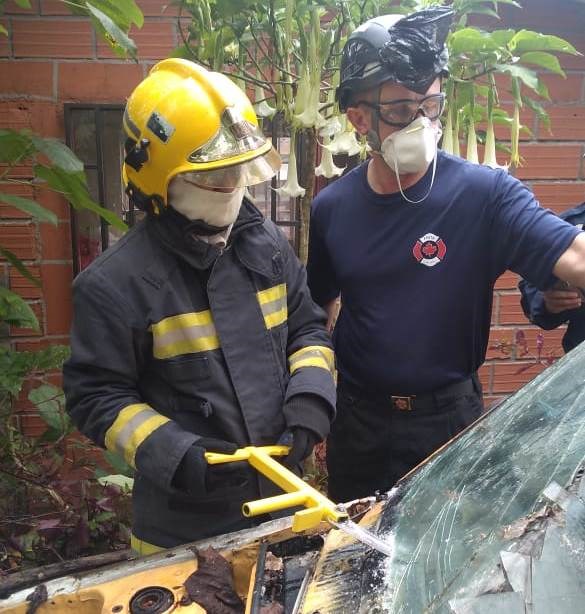TISDALE— James Wright, captain with the Tisdale Fire Department has returned from giving volunteer training to the San Luis Fire Department in Colombia.
The training was deployed under Fire Rescue International Training Association (FRITA), which is an entity solely focused on the delivery of training-based international aid.
“They’re based out of Vancouver, so I contacted them last summer and had my name put on the mailing list for instructor intake,” Wright said.
When the time came around, he got accepted into the program— going to San Luis as the only Saskatchewan firefighter and volunteer firefighter on the team of six.
“I’ve always wanted to instruct fire service and I’m working towards that through the Volunteer Firefighters Association in Saskatchewan,” Wright said. “This was an opportunity to share the knowledge I acquired over the last 12 years.”
Travel was Wright’s responsibility, with the round trip costing about $800. The accommodations, local travel and food were supplied by the San Luis Fire Department and the local municipality.
Wright said the gear the San Luis department worked with was significantly different than in North American departments – including Tisdale. Due to the amount of cement, concrete and steel used in homes, structure fires were seldom an issue.
“They have one truck and some equipment, but not a vast amount. Basically the bare essentials,” Wright said. “They have one pickup that is basically a Toyota Tacoma with a 300 litre water tank, and a pump and a reel hose.”
If a fire was started in the structure it would be more typically a contents fire, with the flames staying in a single room.
While water can be brought into a contents fire, Wright said they tend to be small and can be handled with an extinguisher.
Incline rescue is an important part of the San Luis Fire Department, since the town is located in the mountains.
“They tend to respond more to accidents occurring on slopes whether it’s falls, broken legs, lots of vehicle accidents, vehicles versus pedestrians, vehicles versus motorcycles,” he said.
The department had about a dozen members, and if they couldn’t go on their truck they would respond to an emergency in their personal cars or take a taxi.
“They don’t have a lot of budgetary funding from the municipality but things are looking up. This is now the second year we (FRITA) have done the training there and there are a very good uptake by the mayor and the municipal council.”
The training team instructed as a group, with each member leading workshops on their own specialty disciplines.
Wright led the training on removing a person trapped in a vehicle.
This started with in class theory on how to approach the vehicle safely and stabilize it.
“They had an older car that had previously been in an accident so we went over to the vehicle and I showed them how to use a glass saw, a halligan tool for gaining access to door hardware and then showed them a manual way to disengage the door mechanism.”
The department was equipped with hand extrication tools, but no hydraulic equipment— something commonly used in vehicle extrication within Canada.
“It was all handsaws, hacksaws, axes, prybars,” Wright said. “We teach within our own department how to use hand tools, just in case our power tools either freeze up or won’t start or aren’t working. Or we’re working a scene where we had multiple vehicles.”
This left Wright in the perfect position to lead the training.
“Part of the reason I was put in charge of instructing is I do have that hand tool knowledge,” he said.
Other training included slope rescue with ropes, high angle rope rescue and first aid.
Throughout the trip, Wright said he kept on his Tisdale firefighter shirt— excluding teaching when he had to wear his FRITA shirt.
“I was representing Tisdale, the Tisdale Fire Department,” Wright said.
“It’s just a sense of pride, representing my community. They invested a lot of money to train me to be a firefighter, so if I’m going to do it and train down there I should represent my department.”
FRITA is planning to return to do another training mission in 2021, and Wright said he intends to be there.
“So our plan next year is to teach vertical rescue on ropes, which builds on the rope rescue skills we taught this year, and then we’ll probably build on vehicle extrication skills by showing them how to do some various different methods of attack in order to extricate patients.”
Wright left for his trip on Jan. 17 and returned on Jan. 29.



